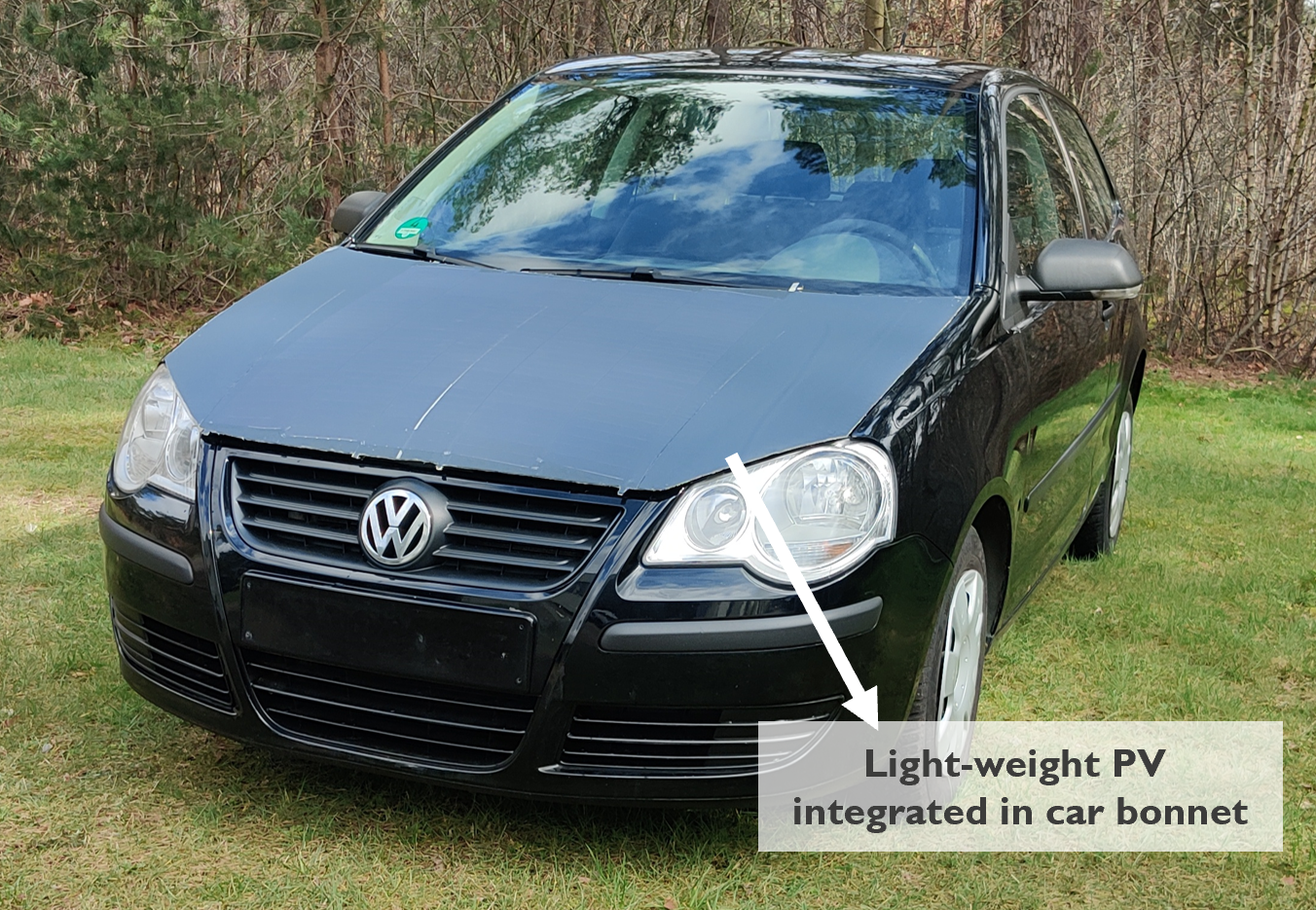Addressing the challenges for lightweight solar panels towards ubiquitous PV (“PV everywhere”)
Genk | More than two weeks ago
Within this topic we want to develop technologies that allow to integrate PV and further functionalize existing surfaces to also generate electricity (next to their existing functionalities).
In the background of climate change and the energy transition, worldwide deployment of solar panels for photovoltaic (PV) production of electricity has grown tremendously (exponentially) over the last years and decades, driven by impressive cost reductions, making it cost-competitive to the other options, whether they are fossil-based, nuclear or other renewables. In fact, this must and will continue to do so, in order to decarbonize many sectors in the industry, mitigate climate change and reach and surpass renewables targets in 2030 and beyond. Such growth however also entails a few challenges in terms of resources such as energy, materials and available land/surfaces. This last aspect is very important, in particular in densely populated areas. To address this, integrating PV in existing surfaces allows to further functionalize these surfaces towards so-called dual- (or triple-...) use. Additionally, integration in existing surfaces also allows much more local (and distributed) generation of electricity close to where it will be consumed, reducing the need for electrical connection and (large-scale centralized) energy storage. On the other hand, integrating PV in existing surfaces also means it will have to cope with the requirements of that surface, depending on its non-PV functionality.
In this topic we want to look into alternatives to traditional PV modules, and replace the traditional glass-based laminates with a light-weight buildup based on fibre-reinforced materials (composites). The primary aim is to decrease the weight (obviously). This allows to integrate PV in applications where the supporting structures can only bear minimal (additional) weight, such as commercial and industrial or temporary roofs. It is similarly interesting for applications where a lower weight is more efficient or practical as in mobile applications or to ease installation/assembly (temporary or not).In second instance, we also want to consider aesthetical aspects, including complex curvatures and colouring, to blend in with the existing surface. No less important is of course the performance, in its ability to generate electric power (high conversion efficiency) and to address reliability (lifetime) and safety (mechanical impacts, fire safety,electric safety,...) aspects. Finally, the implementation of new materials and new compositions in the PV stack should take into careful consideration the challenges and opportunities related to cost, sustainability and recyclability.
Within the PV field, increasing performance and production volumes have been the main drivers of continued cost reduction, and have proven indispensable for their broad deployment. Imec has contributed in this field through improvements in cell performance and advanced module interconnection and encapsulation technologies. In this PhD topic, the target is to explore and evaluate different options, starting from what concepts and material stacks would be suitable and/or required to fulfill the needs in terms of support and encapsulation, and building on the expertise that has been already built up so far. To gain an in-depth understanding here, it will be important to consider thermo-mechanical simulations of light-weight stacks, which requires modeling of (composite) materials, including the determination of the thermomechanical properties as CTE, Young’s modulus etc. Additionally, for the involved polymers (thermoplastic or thermoset/crosslinking), it will be crucial to understand their physical and chemical behaviour throughout the fabrication processes (e.g. lamination) and reliability testing (exposure to high and low temperatures, moisture, high-energy photons, fire, impact, ...). At this stage, the material selection (next to the stack buildup) will also be instrumental considering a design for circularity and/or recyclability, which will be increasingly important with the massive growth of PV in the coming decades.
Beyond this investigation of (composite) polymer materials the compatibility with different solar cells and associated interconnection technologies needs to be checked both process- and material-wise, resulting in proof-of-concept (small-scale) modules where feasible. Such modules can then be evaluated for their performance and reliability and safety, potentially requiring the development of new or adapted characterization equipment. The resulting measurements will then provide feedback for the further development of the fabrication technology.[HSR(1]
Supporting this topic, we have established equipment in our brand new lab facilities that goes beyond state-of-the-art in module production. No less indispensable is the access to in-house knowledge and availability of characterization equipment and expertise to adequately assess samples, ranging from material characterization and analysis to full module performance measurements and reliability testing. In addition we are also actively building up an ecosystem of partners (research institutes and companies) to further develop our awareness and knowledge in the relevant applications for integrating PV modules.

Required background: Materials engineering
Type of work: 40% modeling/simulation, 40% experimental, 20% literature
Supervisor: Jef Poortmans
Co-supervisor: Hariharsudan Sivaramakrishnan Radhakrishnan
Daily advisor: Jonathan Govaerts
The reference code for this position is 2024-100. Mention this reference code on your application form.
